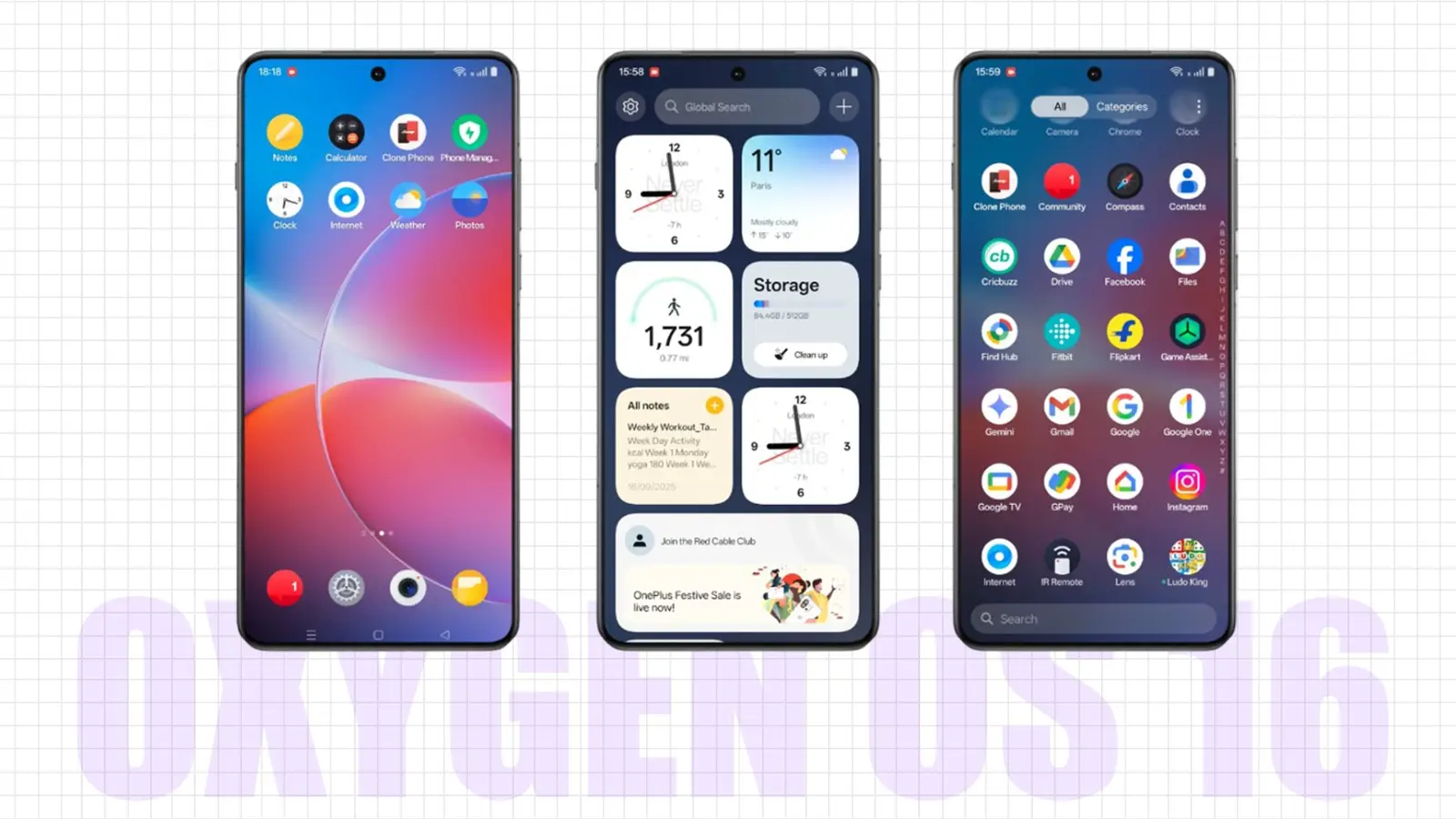OxygenOS 16 Review: Smarter, Faster, and Finally Personal
Story Highlights
The biggest change is that OnePlus has blended AI across the system with the feature it calls Plus Mind. You can think of it as a personal intelligence that quietly keeps track of everything important you come across.

Overall experience of OxygenOS 16 is fluid. If OxygenOS used to be known for speed, the new version adds a brain to it.
I’ve been using OxygenOS 16 for a week now, and this update feels like the most mature version of OxygenOS. It’s not just about speed or new animations this time. The whole system feels more alive, more aware of how you use your device. And for the first time in a long while, I can say that OxygenOS has grown up without losing its simplicity.
Let me start with how it feels to actually live with it. From the moment you unlock the screen, OxygenOS 16 feels lighter and smoother. The animations flow naturally, app transitions are instant, and the whole interface feels calm. There’s no lag. Everything just happens at pace. The new design language really shows here. The lock screen changes slightly. Corners have been rounded out. The icons look cleaner, and the blur effects give a soft, polished look. It’s modern, but not flashy.
The biggest change is that OnePlus has blended AI across the system with the feature it calls Plus Mind. You can think of it as a personal intelligence that quietly keeps track of everything important you come across. Be it articles, images, chats and schedules, it organises them neatly inside Mind Space. Mind space has been there in OnePlus devices for a while now. It basically acts like your personal memory. We have seen this before with Nothing also. There it’s called Essential Space.
You can set it up using the new Plus Key on OnePlus smartphones. With a quick press or just a three-finger swipe up, you can save whatever’s on the screen directly into Mind Space. You can also remap that key for things like flashlight, screenshots or voice recording. What’s interesting is that it gets smart over time. When I captured a movie image, it automatically read the showtime and asked if I wanted to add it to my calendar. When I took a long screenshot of a recipe, it preserved the entire scroll and stored it neatly. It’s small stuff, but this is helpful.
There’s also deeper integration with Google’s Gemini AI, which makes it even more useful. You can ask it for a studio setup plan on the images you had saved in Mind Space, and Gemini can pull references from images and give you a layout suggestion.
The AI Writer built into OxygenOS 16 is another good addition. You can use it for writing short notes, social captions and for summarising long paragraphs. It gets the tone right. You can make text more formal, casual, or even funny. It doesn’t feel robotic. Then there’s AI Scan, which turns the camera into a smart scanner. You can use it to scan receipts and handwritten pages. It automatically straightens and cleans up the document. No manual cropping or adjusting.
There’s another feature called AI Recorder. It records conversations and converts them into text, showing who said what. For meetings or interviews, that’s gold. The audio clarity is excellent even in noisy places.
Together, these features quietly improve your workflow. You don’t notice them at first, but they save time and make everything around the tablet experience feel smarter.
You can also try the PlayLab app, which gives you access to experimental AI tools. One feature lets you turn a single image into a short video clip. Another translates foreign menus and even shows what the dish might look like. These are fun touches that make the system feel alive and evolving.
If you’ve used OxygenOS for years, you’ll immediately feel it. That signature smoothness is back. The transitions are soft, the app openings are fast, and everything feels well tuned. There’s also something called Parallel Processing 2.0, which allows animations to overlap instead of waiting for one to finish. It makes the system feel responsive and fluid, even when you’re switching between heavy apps.
One thing you would like is how well it connects with other devices. You can connect two OnePlus devices simply by bringing them close together. You can sync files between the devices without any interruptions. It also works with smartphones from other brands, including Apple, if the O+ Connect app is installed on them. Also, you can install the O+ Connect app on your laptop or PC and control your phone wirelessly. You can move files from phone or tablet to a PC, copy text from one to the other, and even mirror the screen on a laptop.
OxygenOS 16 is also optimised for the OnePlus Pad 3. The layout is cleaner, you can resize icons, and the dock can hold up to 18 apps. Multitasking has also improved massively. You can open up to five apps at once. Three side by side and two floating windows. While working, I had YouTube open in one window, notes in another, and Chrome floating on top. The tablet handled it effortlessly. Switching between tasks feels natural and smooth.
In privacy, OnePlus claims there’s a Private Computing Cloud that processes sensitive data in a protected space using both GPU and CPU security. There’s also Lock Protection, which lets you remotely secure your device if it’s lost. Your data stays encrypted, and you can only unlock it with biometric verification or a password.
These are the kinds of features you hope you never need, but it’s good to know they’re there. After using OxygenOS 16 for over a week, I can say this is the most balanced and thoughtful update from OnePlus in years. It doesn’t just look better but it behaves better. AI is integrated naturally. Performance feels smoother. The design feels refined. And the overall experience is fluid. If OxygenOS used to be known for speed, this version adds a brain to it. It understands how you use your device and quietly adapts to it.
Trending Videos

What's REALLY behind India's Dowry Problem?

Asia Cup 2025: Why Pakistan can’t win anymore

Adda | Gemini AI EXPOSED! Are AI Photos a Big Lie?

Bhikhari Pakistan’s Cup of Shame

Rana Daggubati Interview: Rana Returns, Scandals Get Wilder

Babil Khan Reacts to Viral Influencer Memes

Aligarh Saas-Damaad Saga

Haryana’s Missing Brides, Rising Bachelors

India’s Greenest Building Marvel

Inside the Gut-Brain Connection

Fukra Insaan Interview on Bigg Boss, Munawar & His Upcoming Projects


